Global guide to maternity leave by country
Explore maternity leave laws and benefits across the globe. Plus how to easily manage international leave policies with vacation tracker, Palmy Vacation.
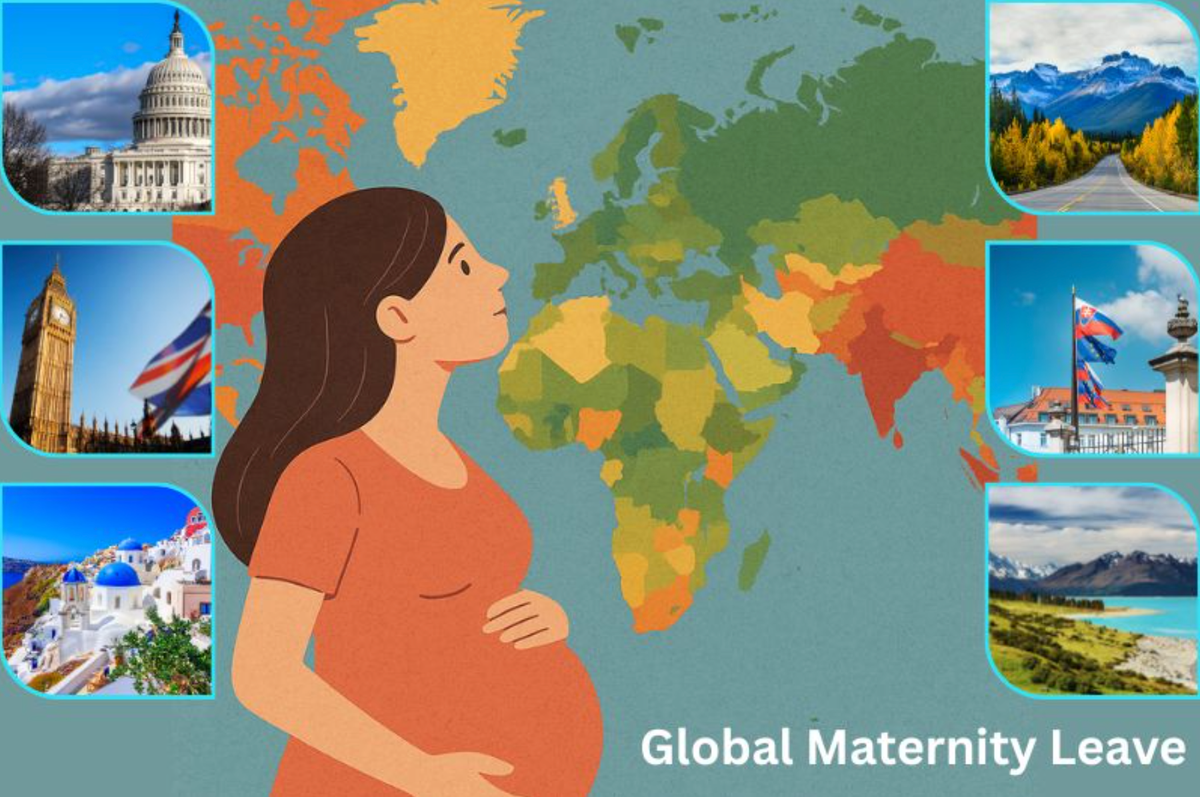
For startups and remote teams, the ability to hire people from all over the world is like having a superpower. But it doesn’t come without its challenges. Managing paid parental leave for employees across different countries is definitely one.
The brilliant CFO you hired in Germany finds out she’s pregnant, and you’re suddenly thrown into understanding German leave regulations governing parental leave. Then another staffer requests paid paternity leave, and you’re back to Labor Law Adviser Google, checking if it's a legal requirement in their country.
In this guide, we provide you with maternity leave benefits in other countries, providing a snapshot of what you need to know.
Quick Overview
Maternity leave varies significantly by country. Some mandate generous paid maternity and paternity leave, while others leave it up to the employer. Countries like Bulgaria and Norway offer between 49-58 weeks of paid maternity leave, while the US does not mandate any paid leave for new mothers and fathers.
Table of Contents
- 10 Countries with top maternity benefits
- 10 Countries with low maternity benefits
- Maternity leave in popular remote work countries
- Easy management of global maternity leave
- How to build a global maternity policy that appeals to remote workers
- Conclusion
- FAQs
10 Countries with top maternity benefits
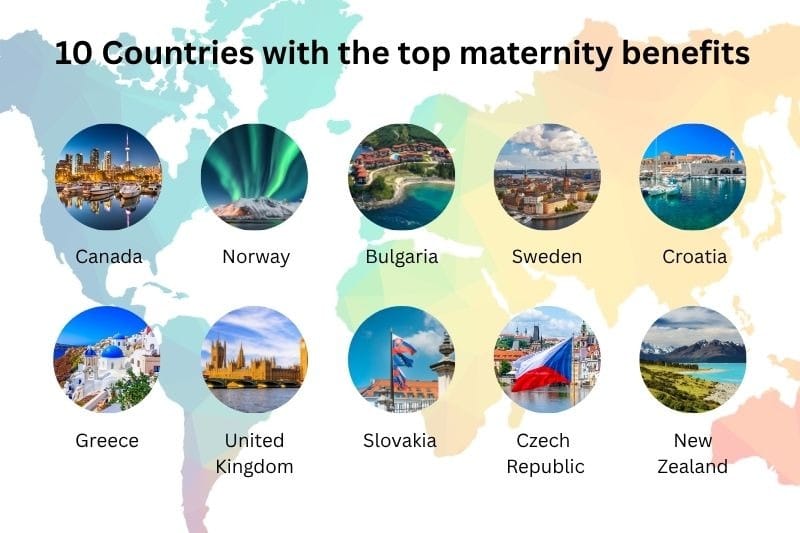
When it comes to generous parental leave policies, European Union countries lead the charge, with Canada, the UK and New Zealand joining the top 10 with their strong worker protections.
The countries offering these family benefits have tightly controlled regulations surrounding employee rights and family leave. Many countries can also have regional or provincial maternity rules, so employers should align the weeks of paid family leave accordingly.
10 countries with low maternity benefits
The reasons for countries making this list are not always clear-cut. There are many economic, cultural, and social elements that shape the worker benefit landscape. However, in comparison with the countries above, these benefits are minimal.
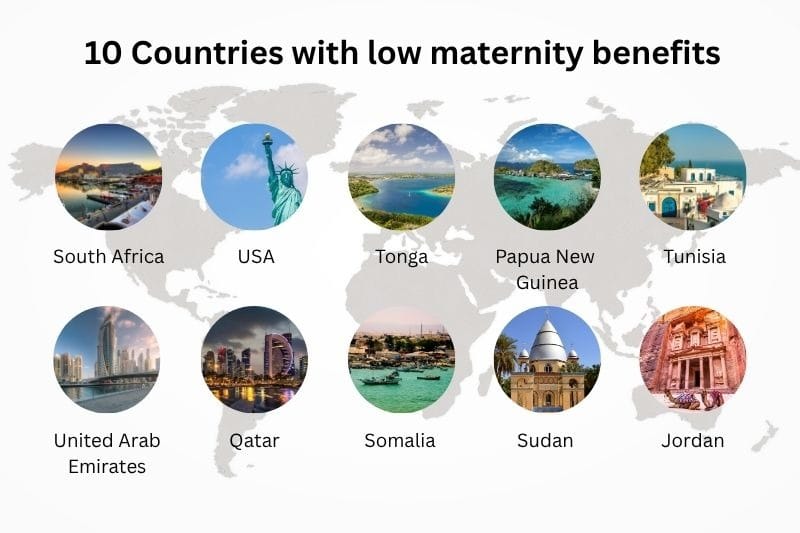
Maternity leave in popular remote work countries
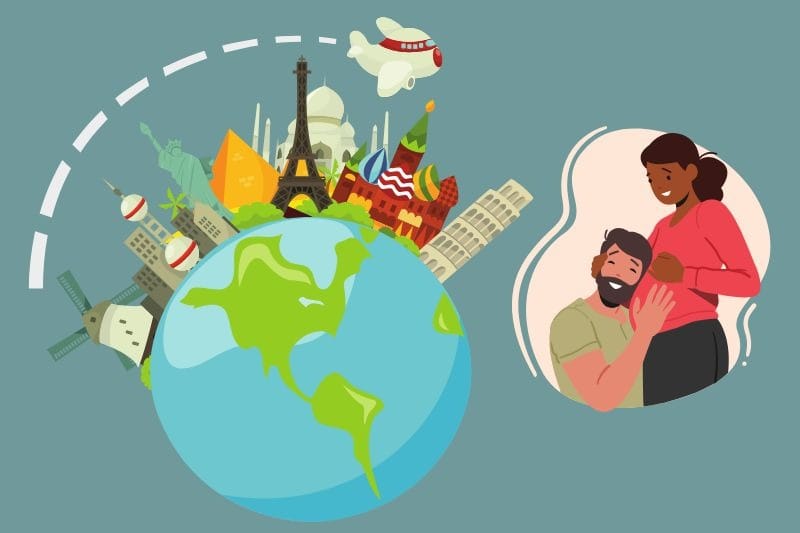
In this list, we examine countries around the world that are popular choices for hiring remote workers, and compare their maternity leave.
Easy management of global maternity leave
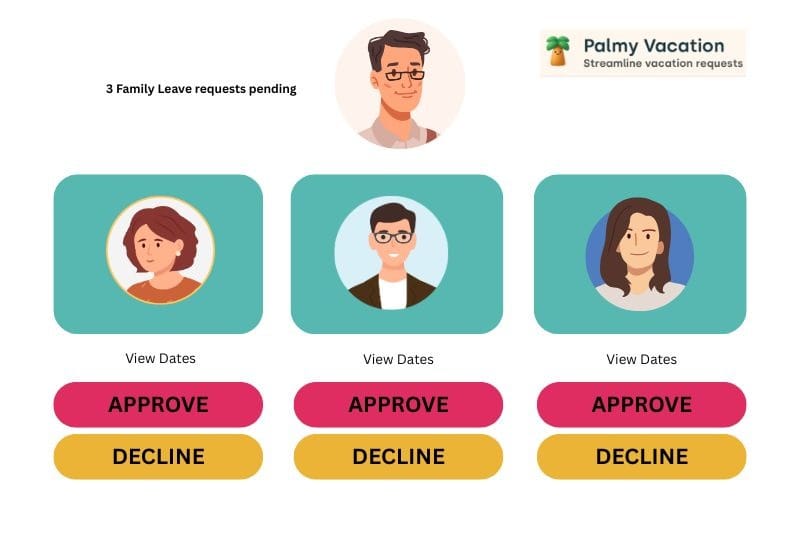
When your team is scattered all over the globe, trying to manage the maternity and paternity leave allocation of each country is difficult enough. Trying to do this on a spreadsheet is just a nightmare.
This is the exact reason vacation tracker apps, like Palmy Vacation exist. It takes hours of manual tracking and turns it into a fully automated task that speeds up vacation approval and the admin surrounding it. With Palmy, you can:
- Centralize all leave types on one unified system that you and your employees have access to.
- Customize leave types and balances according to your company policies.
- Empower employees to view leave types and balances from the app - no HR or management intervention required.
- Generate reports tracking vacation requests, approvals, and history.
The best part about vacation tracker apps like Palmy Vacation is its seamless integration with Slack - one of the most popular remote working communication platforms. Learn more in Best Vacation Tracker For Slack.
How to build a global maternity policy that appeals to remote workers
Remote workers across the world are becoming more aware of the benefits offered by companies; therefore, you need a policy that will be attractive to top talent across the globe. Here are the steps you need to achieve this:
- Use the local law as your foundation, not your ceiling. Any company can offer the bare minimum, but benefits over and above what’s expected send a clear message. Your company values its workers.
- Align your benefits with the company values. A country's mandatory obligations towards family leave shouldn’t be the driving force behind the benefits you offer. For instance, if you value gender equality in your business, then reflect that by offering both maternity and paternity benefits.
- Clarify compensation upfront. So much stress can be avoided by doing this. Workers like to know exactly what they can expect to be paid during maternity or paternity leave, so that they can plan ahead. This simple gesture makes a big difference.
- Keep your policies active. Once written, great policies can gather dust unless your workers can easily access and understand them. Run ‘information sessions’ where you educate your employees on their benefits. You can even do this in a fun way by turning it into a trivia game.
📑 Deeper insight: In, How To Manage Vacation Requests As A Small Team we discuss how you can create and communicate your time off policy to your employees.
Conclusion
Around the world, expectant parents have varying parental leave benefits. These benefits focus on the number of weeks paid or unpaid leave mandated in each country, as well as the percentage of earnings employees can expect during this time.
HR professionals are constantly challenged to increase employee benefits that attract top talent, and manage the demands of having employees in different countries. With the help of apps like Palmy Vacation, this mammoth task becomes simple. Customize it once, according to company policy, and then let it go to work for you. Palmy keeps track of parental leave benefits, with employees able to access this information for themselves and request leave from the app.
Enjoy the benefits of a worldwide workforce while making life easier for everyone.
Frequently Asked Questions
1. Which country has the highest maternity leave?
Bulgaria is the country with the highest paid maternity leave and the most generous benefits. They mandate 58.4 weeks, with 90% of the mother's average gross salary, calculated over the 24 months preceding the leave. A minimum of 45 days must be taken before the expected date of birth.
2. Where does the US rank in maternity leave?
The US ranks last among developed nations in maternity and paternity leave benefits. While the FMLA provides for 12 weeks of protected maternity leave, the employer is not obligated to pay the employee’s salary during this time.
3. Does the USA offer paid maternity leave?
Paid maternity leave is not mandated in the US. The Family and Medical Leave Act provides for eligible employees to have 12 weeks off to have a baby. However, this leave is unpaid. Employers have the option of offering new parents partial wage payments, with the focus on retaining top talent. These benefits should be clearly outlined in the maternity leave policies of the company.
4. Which country has the worst maternity leave?
This depends on whether you’re looking at the number of weeks leave allowed, or the minimum wage paid during maternity leave. Tunisia mandates 12 weeks of maternity leave, and 60% wages paid from social security benefits. However, countries like Botswana and Solomon Islands only pay 25% of wages, with 12 weeks leave.
5. Why do countries offer paternity leave?
Countries across the globe have started offering paternity leave, promoting gender equality, allowing fathers to be involved in raising children as soon as possible after birth, and increasing mental health. Shared parental leave also provides an opportunity for working mothers to return to the office, while the child benefits from bonding with the father.
References:
5. India
6. Nigeria




